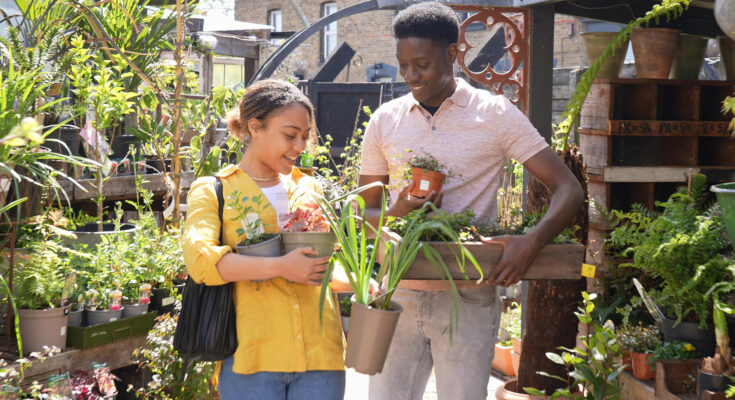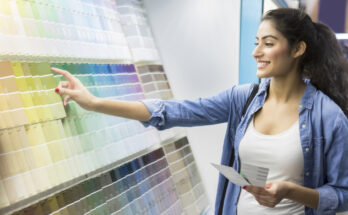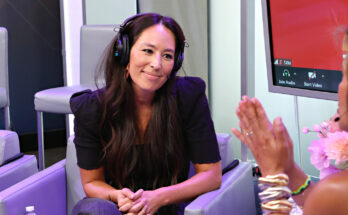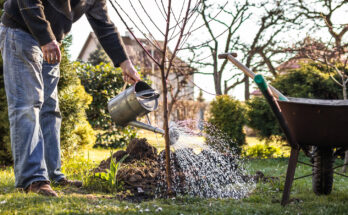How To Choose A Tiny Plant To Use As Floating Shelf Decor
If your floating shelf is looking a little lifeless, adding a tiny plant is a fun and easy way to brighten it up while accommodating the shelf’s lack of depth and weight limitations. That said, there are a few considerations to make before you invest in new greenery. Lighting conditions, whether to purchase real or fake plants, and personal design preferences will all come into play.
Understanding the difference between direct and indirect sunlight (and which one your plant needs) will be a huge help. If you have your heart set on a succulent, for example, odds are you will need a shelf near a south-facing window that serves as a source of direct sunlight, though varieties of Haworthia are petite and tolerate indirect light. If you’re stuck working with a shelf near a north-facing window, something small and low-maintenance, such as a ZZ plant (Zamioculcas zamiifolia) or a nerve plant (Fittonia albivenis), can better tolerate those low-light conditions. Humidity will also play a factor. Succulents prefer dry climates, while air plants (which are a great size for floating shelves) will do better in humid rooms.
Now, there are plenty of points to consider in the real versus fake plant debate, but if you’re more of a brown thumb, choosing faux greenery is the way to go. In this case, choosing the right material is key. Plastics and fabrics are common; plastic plants are affordable and easy to clean but can look fake, while silk plants (which are made from various textiles and plastics) produce a more realistic plant but can be pricier and a bit less durable.
Tips for styling floating shelves with plants
Once you’ve chosen tiny plants that are suitable for your situation, it’s time to start styling your floating shelf. Because small plants can be hard to see, you might need to create the illusion of height. To do this, you can place your plant on a stack of books or house various small plants in a pretty terrarium.
To create dimension and visual interest, try clustering a handful of tiny plants together on your shelf. For the best results, choose plants with a mix of shapes, textures, and heights, like pairing a squat and spiky succulent with something with long, hanging vines. Using a variety of pots, bottles, and unconventional planters is also a good idea. Stick with three to four plants so as to not overwhelm the shelf, and get creative with the accessories and photographs that you arrange alongside.
It is also important to avoid some of the most common mistakes when placing your plants on shelves. One of the big ones is forgetting to add a drainage dish. The last thing you want is for water to come rushing out of your plant pot, destroying your books or other home decor goods.



